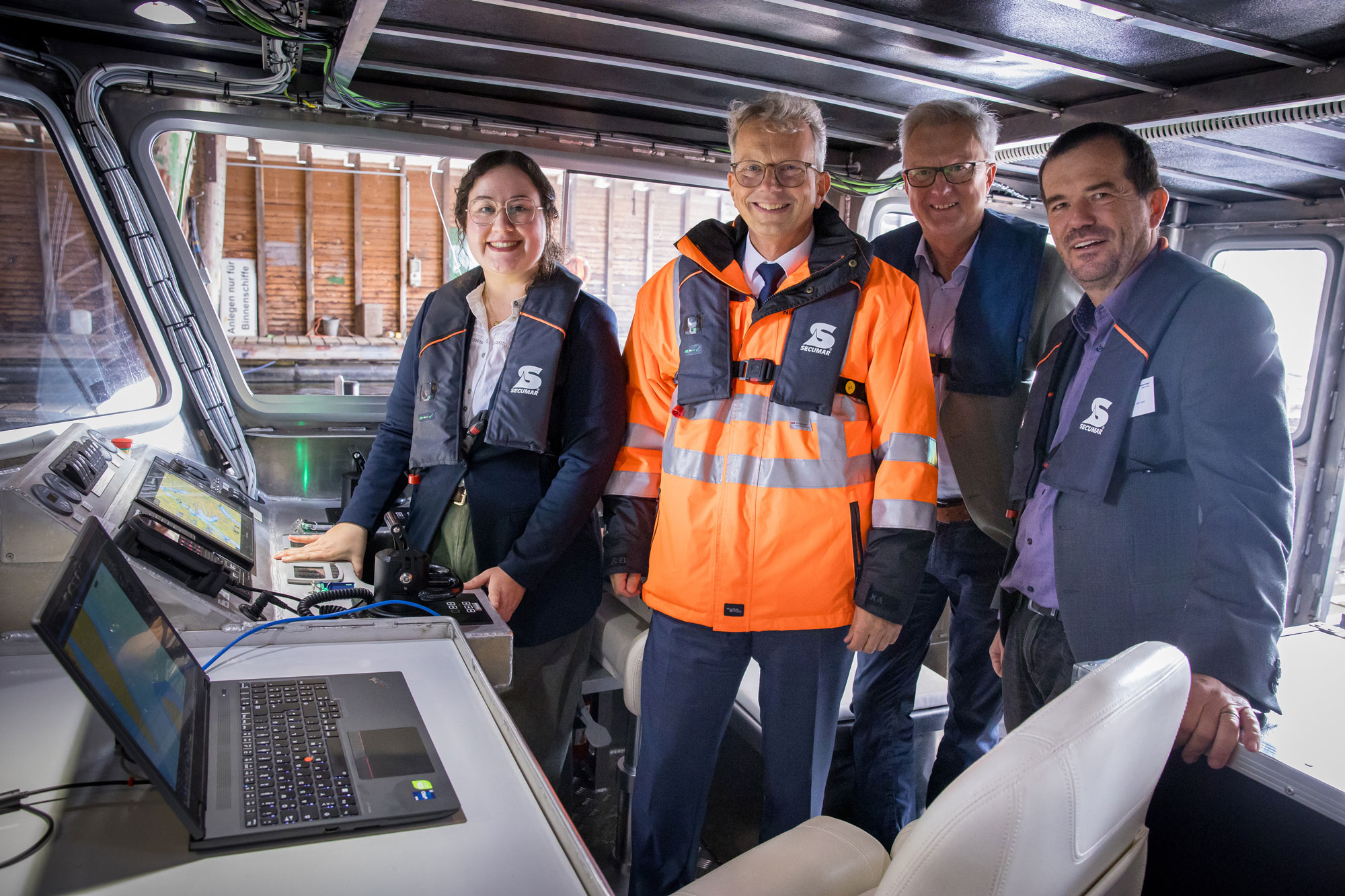Together with their alliance partners, namely the German Aerospace Center (DLR) and the company MAREVAL AG, Niedersachsen Ports GmbH & Co. KG (NPorts) had been researching for 3 years to obtain a more efficient process of port maintenance within the Port of Emden. AMISIA stands for “Advanced Port Maintenance: Intelligent, Sustainable, Innovative and Automated Dredging”. During today’s closing event, NPorts will introduce the research results, i.e., how dredging should be performed in the future, but also the ship concept resulting from that research.
The guests can expect a glimpse into the future of modern port maintenance: Highly automated systems and a remote-controlled research vessel are suggesting that in a not-so-distant future, an unmanned dredge ship could make its rounds within the Port of Emden.
Dredging Secures the Port Operation
Port maintenance means securing the navigability of the port. In order for ships to safely traverse the port and moore, NPorts treats the underwater sludge at the interior Port of Emden on a regular basis. “With their port maintenance, NPorts ensures a dynamic port operation and therefore contributes to the economic success of the region”, Holger Banik, Managing Director of Niedersachsen Ports GmbH & Co. KG and of JadeWeserPort Realisierungs GmbH & Co. KG, elaborates.
Economic Port Maintenance
A more economic port maintenance will save money, energy, and resources: Up until now, we have spent some 4.5 million Euros each year to maintain the port in Emden. In addition, the current process produces some 140 metric tons of CO2 each year. Holger Banik substantiates how much could be saved, if the entire process would be optimized: “Streamlining port maintenance at the Port of Emden is in our best interest, since we could decrease the costs for port maintenance by 15% and lower the CO2 emissions by 20%.”
NPorts’ Project Manager, Ms. Daniela da Rosa, further emphasizes the potential of an optimized process of port maintenance: “The research results we have obtained together with our project partners were integrated into an innovative Ready-for-Autonomy ship design. These technologies allow us to execute the recirculation process in an even more economic and demand-driven way. This makes our port maintenance even more innovative, since - much as during the introduction of the recirculation process at the Port of Emden in the 1990’s – we don’t have to work so hard anymore to combat the sludge. There is a great potential to save additional costs and reduce emissions even further.”
Fluid Mud and Recirculation
To avoid that port operation seizes, the hopper dredger “Anna” makes her rounds through the Port of Emden as needed and treats the sediment in such a way that a state called “fluid mud”, i.e. liquefied sludge, is constantly maintained. Any ship can pass through such liquefied sludge until the mix settles down again and condenses. Through continuous port maintenance, the sludge in Emden is kept at the fluid mud state. This is how NPorts keeps the port navigable.
This tried-and-true process of port maintenance, the recirculation procedure, has been successfully applied to the Port of Emden for more than twenty years and enjoys an acknowledged reputation under the name “The Emden Process” far beyond the borders of East Frisia.
Banik explains: “With the research project AMISIA, we take the well-proven process and make it better. We explore possibilities of port maintenance that are more efficient, more sustainable, and more cost effective.”
Outlook of Port Dredging
The core idea of the project consists of strengthening the sustainable cost efficiency of port maintenance by largely automating the cost-intensive maintenance dredgings. A research vessel comes equipped with the prerequisite automation technologies so that the automation and service risks of the operation of such a ship within the port can be tested and assessed.
Sebastian Feuerstack, Department Manager for System Engineering for Future Mobility at the German Aerospace Center (DLR) is showing an optimistic attitude: Nowadays, there is an abundance of technologies, like for instance in data processing, communication and sensor technology that can be comprehensively applied to the automation of a dredge ship. The great challenge lies in designing such ships to be safe. In order to achieve this, we designed test processes within the project to prove the reliability of the systems. We are confident that – even in the near future – the first ships will be partially automated while being monitored from shore to maintain the port basin.”
Even at this point, this concept for optimized and more eco-friendly port maintenance has an added value in the view of NPorts, since it offers a future-relevant alternative vis-a-vis the current solution. “However, we would like to learn even more so that we can leverage all the potentials and develop a market-ready product together with our partners. For us, it would be a definite plus, once we can take the results of the research and transfer them to other ports” Holger Banik emphasizes.
The following link contains photos of the closing event: AMISIA-Abschlussveranstaltung 2024
Terms of Use
The pictures offered for downloading are available for free editorial use, referencing the source in online and print publications. This permission is valid only for one-time use, for the stated purpose and extent. Each additional use requires further prior consent in writing. Every picture is protected by copyright. Each picture contains a copyright notice that must be used. The pictures may not be archived.


